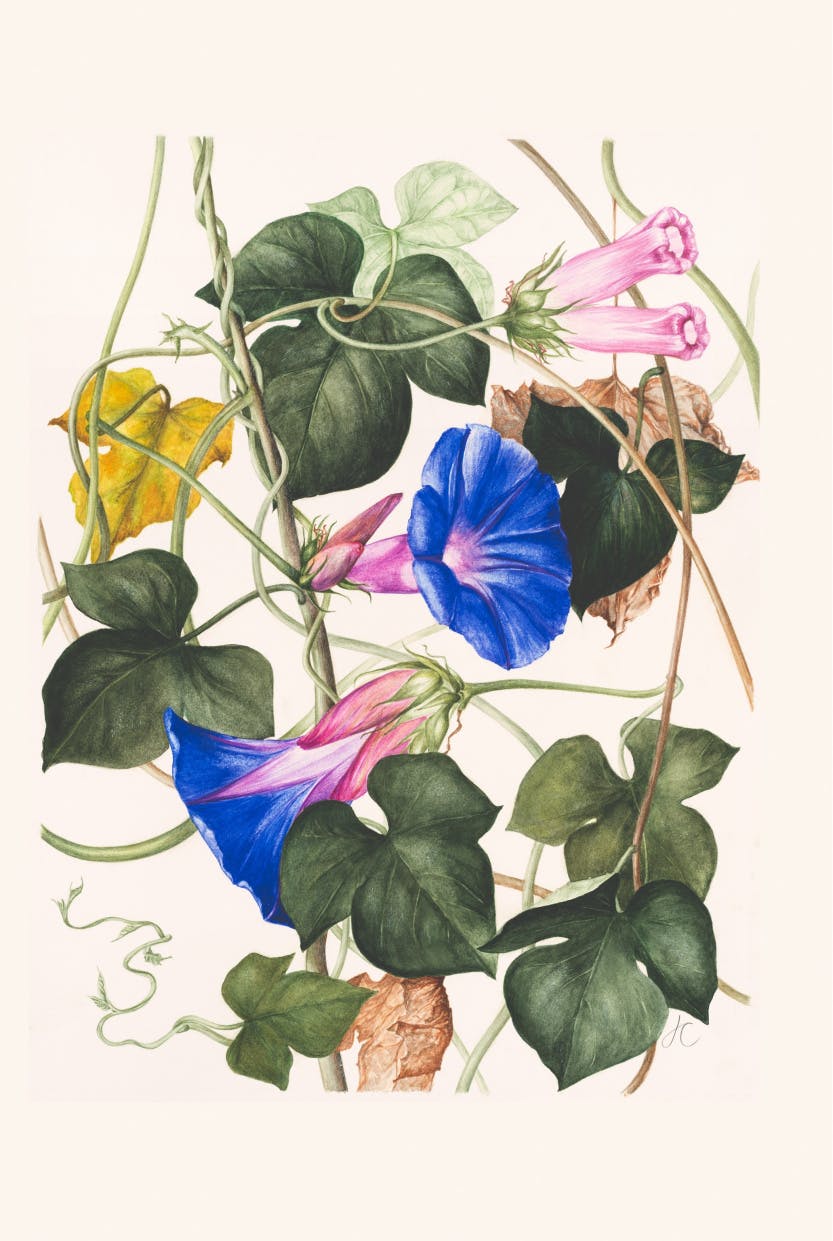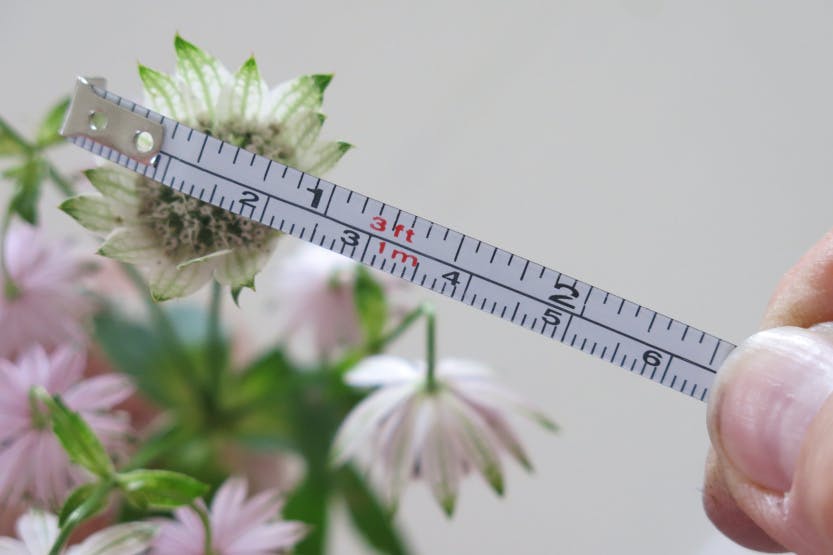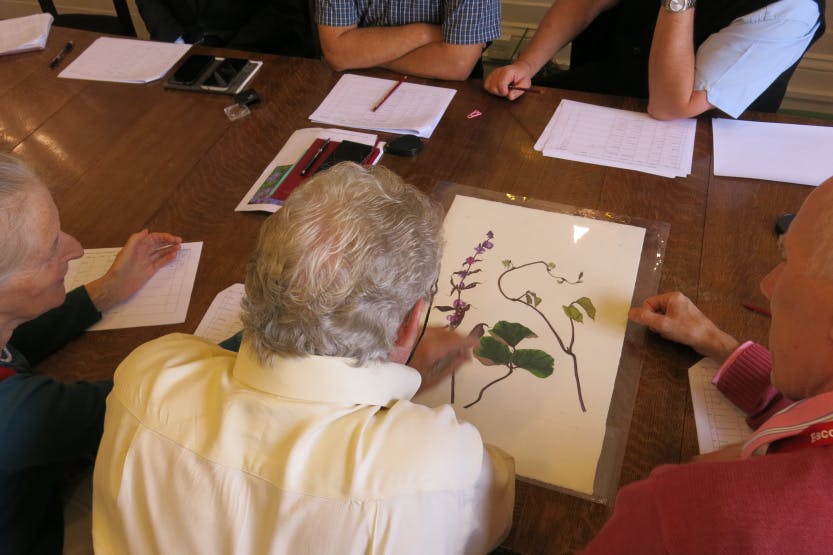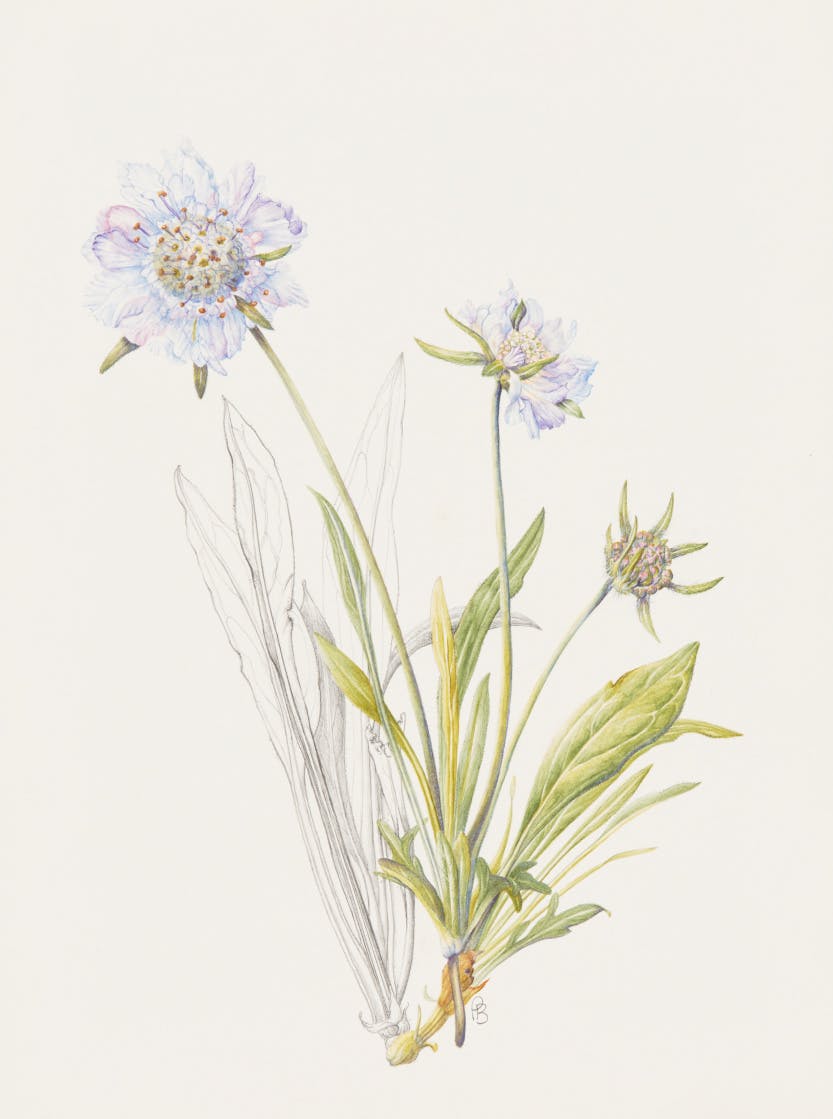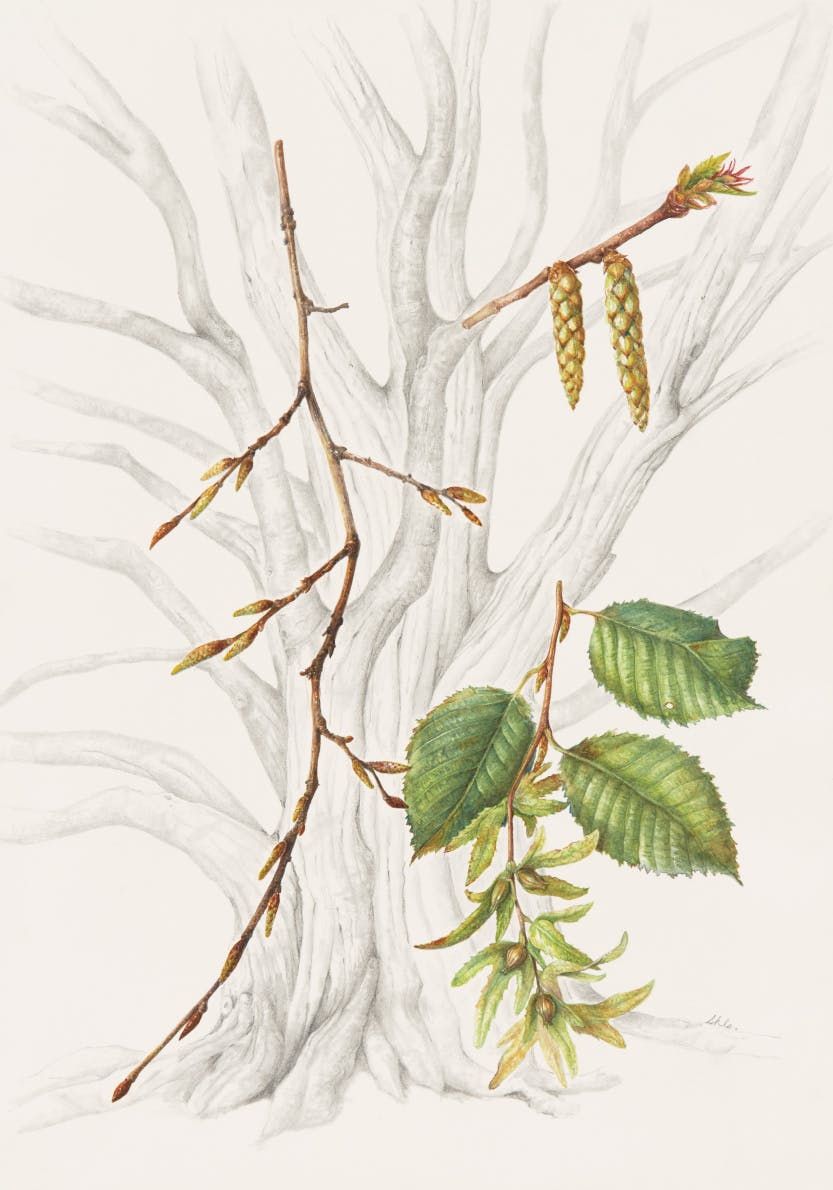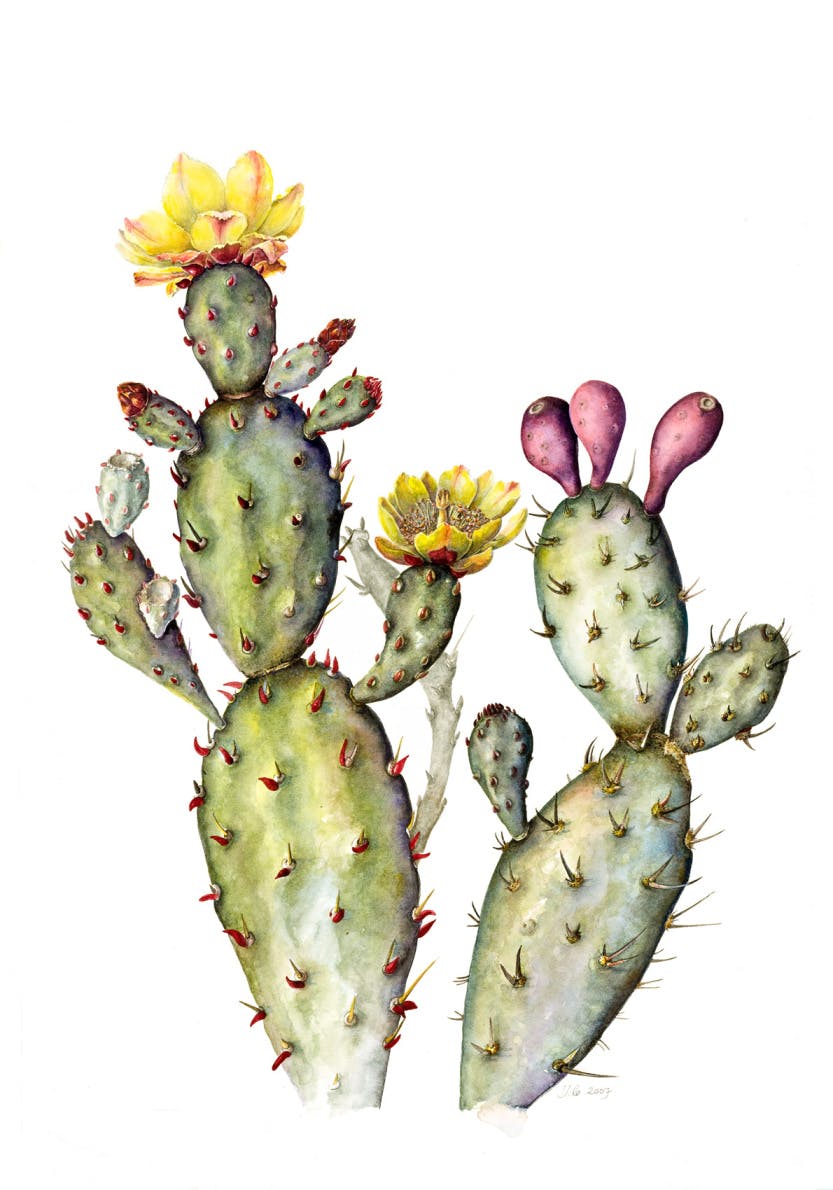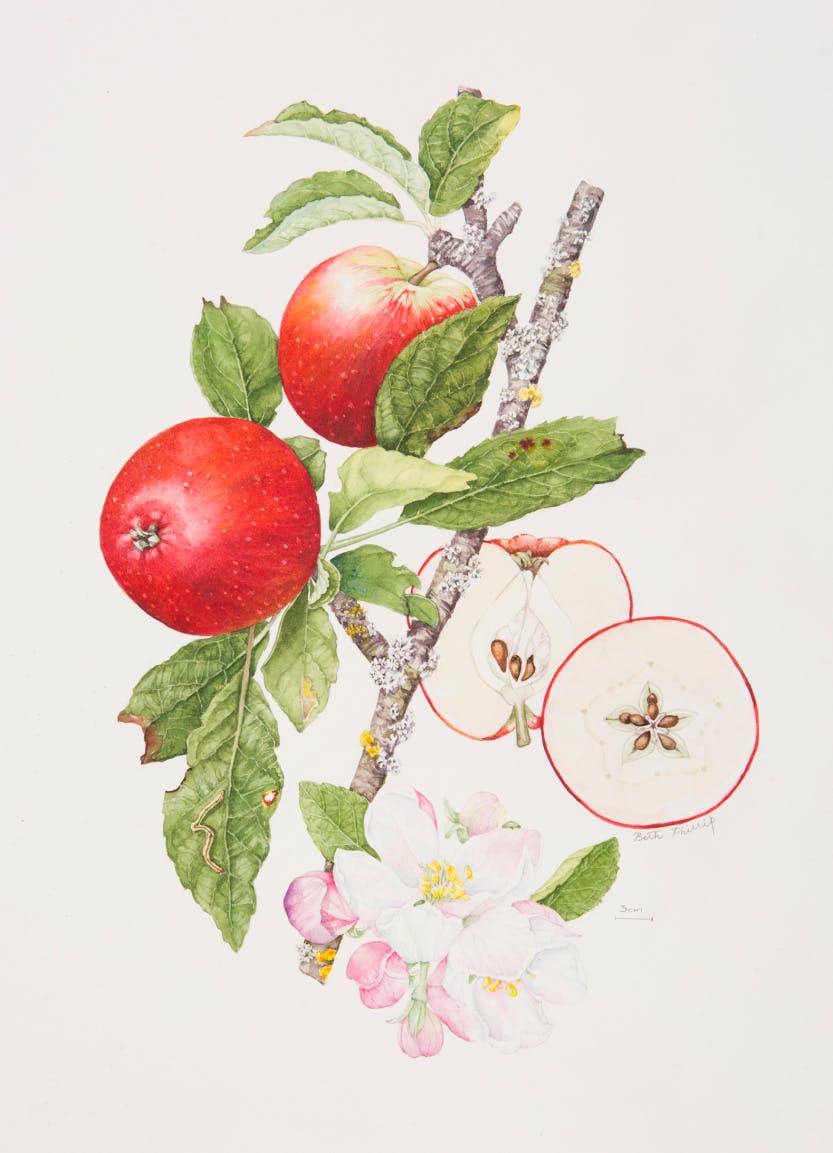The art of botanical watercolours: meet the Hampton Court Florilegium Society
Date: 06 December 2019
Author:
Laurie Gibbs
One of the newer collections in the Historic Royal Palaces archives is a large group of botanical watercolours, on both paper and vellum, painted by the Hampton Court Florilegium society. The society was founded in 2004 and aims to establish an archive of botanically accurate paintings and drawings of the plants that are growing in the Hampton Court Palace gardens each year.
Botanical painting has a long history going back more than 2,000 years. It is a way of recording information to help botanists and herbalists identify plants for medicinal purposes. Later, artists such as Georg Dionysius Ehret (1708-1770) and Ferdinand Lucas Bauer (1760-1826) started to paint rare and beautiful specimens of the plants in collections of wealthy patrons and collectors across Europe. These paintings were sometimes bound into books and reproduced in order to be sold to other collectors and institutions.
Today at Hampton Court Palace the tradition of documenting the gardens' flora is kept alive by the Florilegium society. The society meet in the summer to paint and in October the paintings are submitted to a panel of invited botanical experts and Hampton Court gardeners. Prior to being painted, the botanicals are scrutinised and documented for several months to ensure that new and mature leaves as well as flowers and berries can be included in the paintings. A dozen or so watercolours are chosen to be added to the Hampton Court Archive if they are botanically accurate and of a good enough standard. Some paintings might go back to the artist in order to have some details changed. A person who has had three paintings accepted into the archive becomes a Fellow of the Hampton Court Palace Florilegium Society.
The paintings are meant to represent a snapshot of the planting that year at Hampton Court; for example, in 2018 they celebrated the kitchen garden which became mature that year. The garden was planted in 2014 and recreates how it would have looked in the 18th century. Very few records survive of the original garden, but the layout of the beds was re-designed from 18th-century paintings and as far as possible historically accurate fruit and vegetable crops were chosen. Have a look at the images below that form part of the Florilegium archive, some of which show vegetables from the kitchen garden, others depict exotic species from the glasshouses or flora from around the gardens, and all are described with delicate precision and care.
Laurie Gibbs
Preventative Conservator
More from our blog
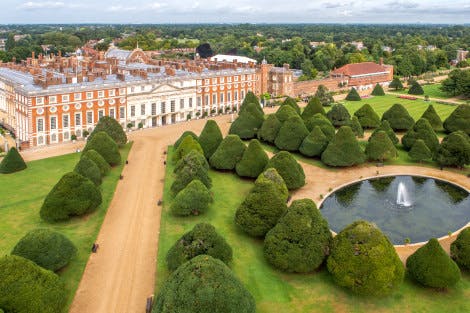
Sir Christopher Wren's Hampton Court Palace
08 March 2023
Head of Historic Buildings Daniel Jackson looks at one of Sir Christopher Wren's most famous and problematic projects: the remodelling of Hampton Court Palace.

400 Years of William Shakespeare at Hampton Court
06 November 2023
On 8 November 1623, John Heminges and Henry Condell, completed the collected works of William Shakespeare – now known as the ‘First Folio’. Here, we explore how this period was brought to life at Hampton Court Palace this summer, using research into the playwright’s palace connections.

Mistletoe in the Hampton Court Palace Gardens
20 December 2019
One of the most popular questions posed to our gardeners during winter concerns strange lumps of weed growing in trees in the East Front garden. These random and odd-looking growths are in fact clumps of mistletoe.


